Power consumption at a glance
We measure a value of 14 watts for the card in the idle, which is so okay in view of the scope of performance, even if we had hoped for a little less. But you can really live with that. We were a little irritated when it comes to multi-monitor operation, as this result can vary more clearly when using a wide variety of combinations. That ranged from approx. 24 watts at two equal to more than 40 watts when operating with three very different output devices. We'll look at the values for gaming and the stress test right away.
The power consumption in normal productive everyday life ranges from approx. 140 watts (2D drawings, 3D wireframe) up to just under 250 watts (OpenGL) and final 265 to 275 watts when rendering (depending on GPU temperature).
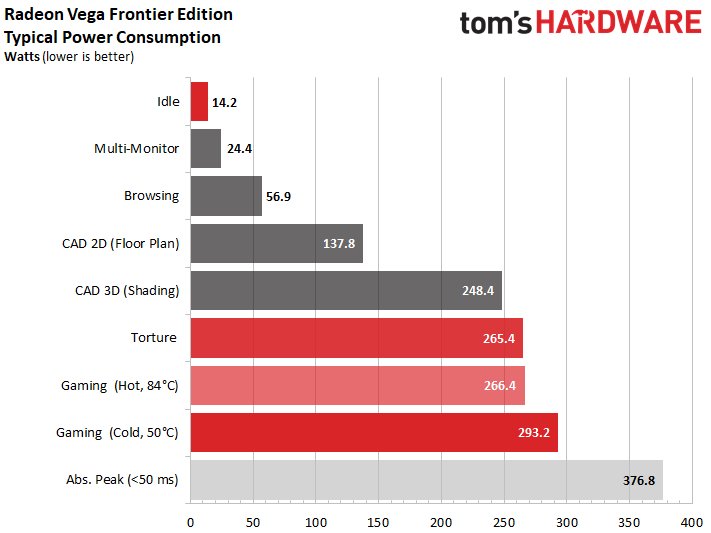
Gaming Loop – Cold and Hot
Depending on the temperature of the GPU (and thus also the clock), the power consumption is higher or lower. If the card is still cold, it can hold up to almost 300 watts and reaches very short-term peaks up to just under 380 watts. The latter is not dramatic and is safely intercepted by any reasonably current power supply on the secondary side.
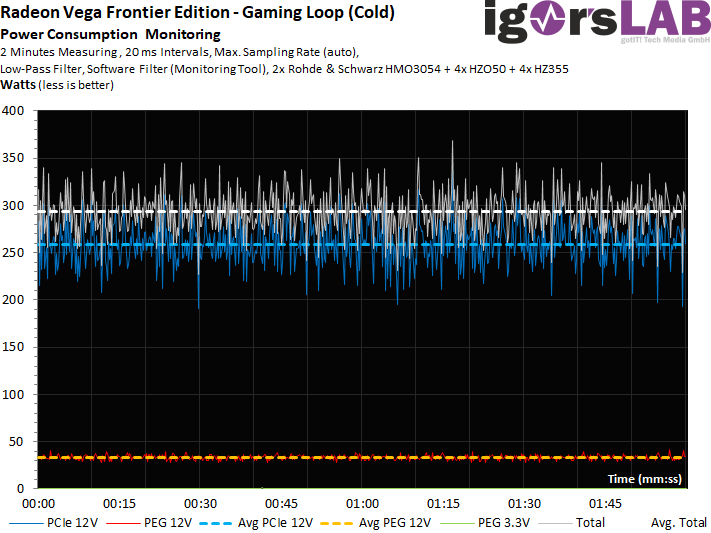
The flowing currents look analogous:
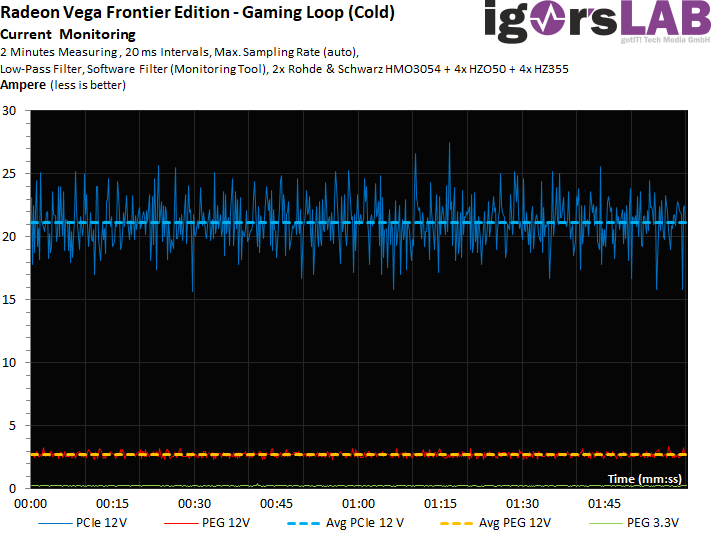
Once the card has reached the target temperature of 84°C, the power consumption decreases significantly due to the back-controlled clock speed of the GPU. The measured 266 watts then produce a slightly more moderate picture:
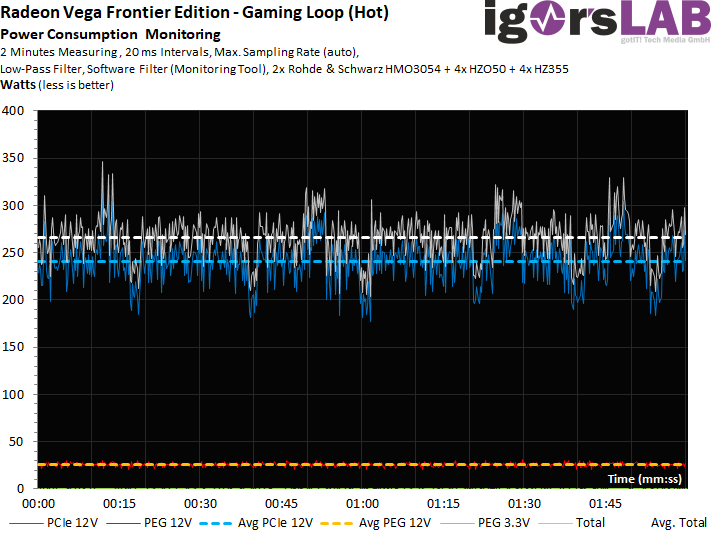
Logically, the measured currents are then also a tick lower:
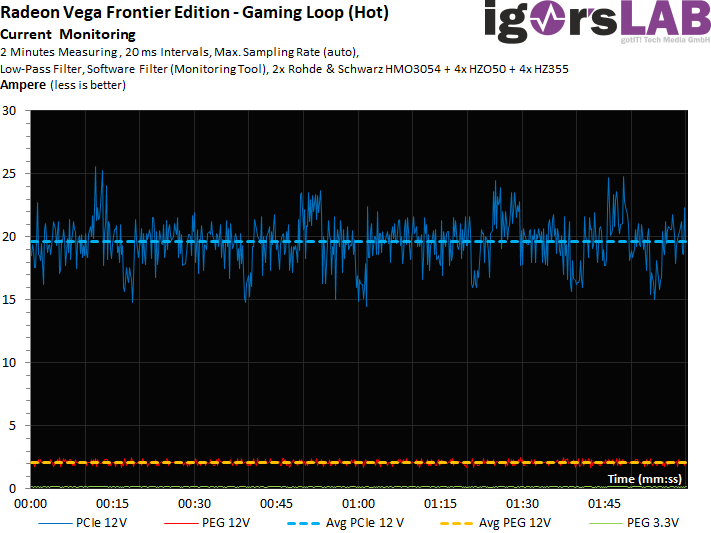
Stress test and hard throttling
Now let's look at what Power Tune does when the predicted load gets too high! On the next graphic we can see very nicely how the intervals of the clock control turn out and what effect this throttling has on the power consumption. The periodic ups and downs create a completely different image from the full load that was initially tolerated.
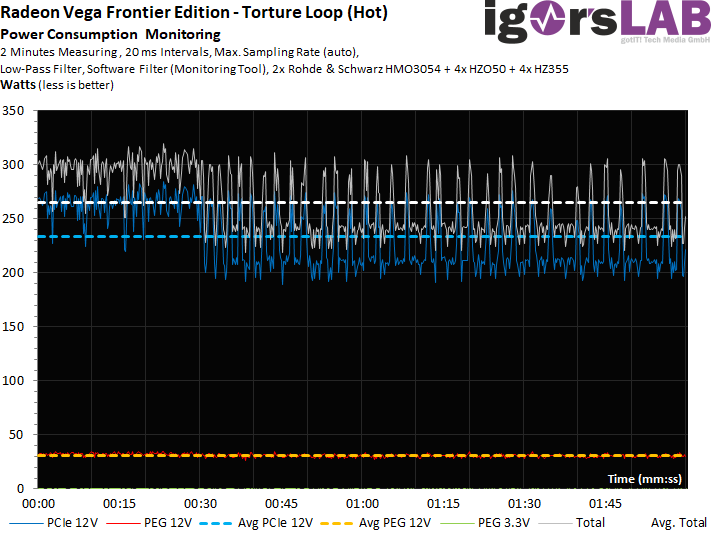
In this case, too, the measured current flows correspond to this:
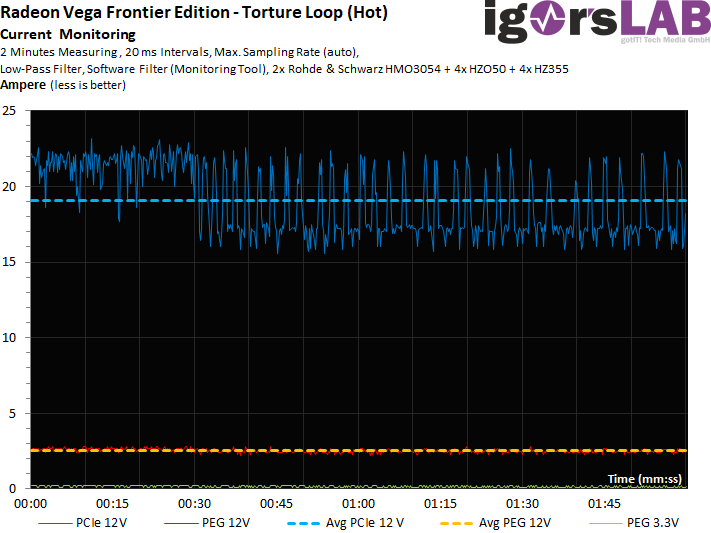
Loading of the motherboard slot
This point has been requested by readers since the launch of the Radeon RX 480 (also for Nvidia cards), so we will now include this measurement with every test. With the card tested today, however, the concern is completely unfounded, because the slot is used very moderately with a maximum of 2.7 amps and is thus even just below half of what is allowed.
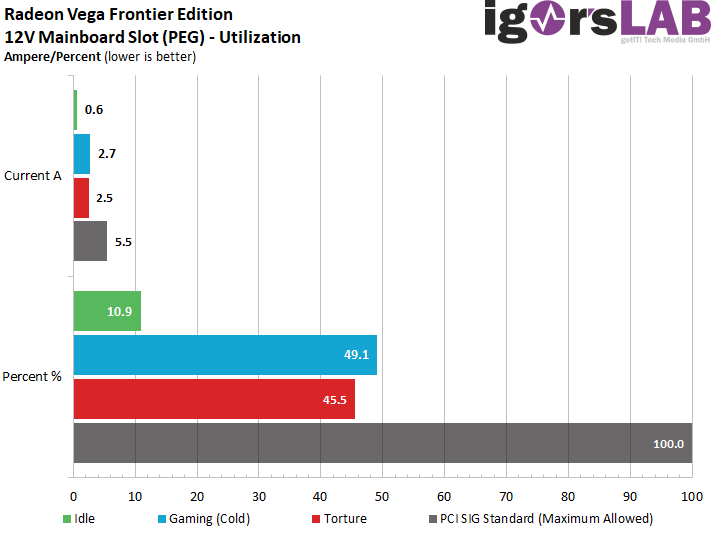
- 1 - Einführung und Übersicht
- 2 - Details zu Architektur und HBM2-Speicher
- 3 - Demontage, Kühler und Interposer-Details
- 4 - Platinendesign und Detailinformationen
- 5 - Benchmark-Intro, 2D-Troughput und -Performance
- 6 - 3D Workstation- und Design-Benchmarks
- 7 - Gaming-Performance: DirectX 11
- 8 - Gaming-Performance: DirectX12
- 9 - Gaming-Performance: Vulkan/OpenGL 4.5
- 10 - Leistungsaufnahme im Detail
- 11 - Takt, Temperaturen und Geräuschemission
- 12 - Zusammenfassung und Fazit


















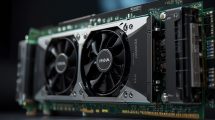















Kommentieren